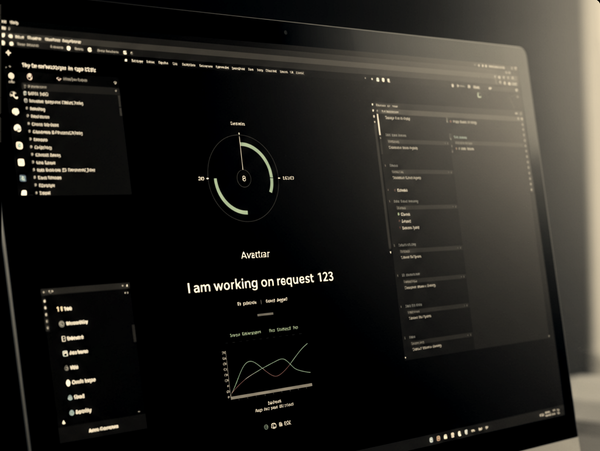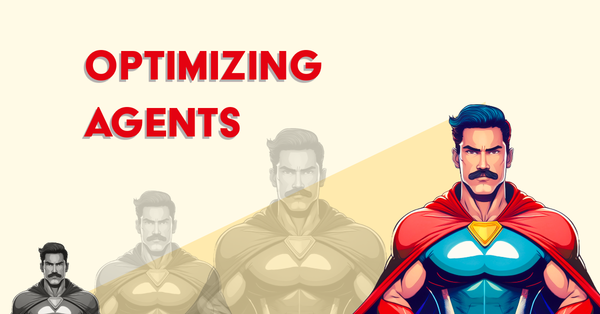Vertical AI - New Era of Boom
The article explores what Vertical AI is, how it's being adopted by the market, and the 7 steps formula to enter this rapidly evolving field.

What's the buzz?
If you're using generative AI and find yourself wondering, "What's all the buzz about now?"—here's the deal. Large Language Models (LLMs) like GPTs are designed to be generalized, making them versatile for a variety of use cases. However, one major drawback of these generalized models is their accuracy, especially in low-probability or niche scenarios. These are often referred to as "hallucinated models" because they are fundamentally designed to predict the next token, which inherently means they can hallucinate and produce plausible-sounding but incorrect information.
On the other hand, instead of horizontally scaling with the world's vast knowledge base like LLMs, the industry is increasingly shifting towards specialized AI models. These models are crafted to address specific use cases, offering significantly higher accuracy and reliability where precision is key. Specializing the AI models to solve business or domain problems is what referred as Vertical AI.
Look at the number of VC fundings where the investments are more towards AI enabled SaaS solutions its clear how vertical AI is a hot topic.
Why Vertical AI is bigger than legacy SaaS?
Vertical AI is positioned to surpass legacy SaaS, which revolutionized industries during its boom, by tackling industry-specific challenges with precision and effectiveness. Unlike the generic approach, Vertical AI combines domain expertise, specialized data, and customized AI models to offer unparalleled value.
Vertical AI addresses several areas that legacy SaaS wasn't able to fully address:
- Cost Optimization: Automating niche tasks to reduce operational expenses.
- Enhanced Efficiency: Streamlining processes with tailored solutions.
- Personalized User Experience: Delivering insights and tools specific to individual business needs.
As per Global Market Insights Report, the global vertical AI market size was valued at USD 10.2 billion in 2024 and is estimated to register a CAGR of 21.6% between 2025 and 2034. This is phenomenal because these tailored solutions will address the unique challenges and needs of many industries, like, healthcare, automotive, manufacturing, and finance.
What needs to be a "Vertical AI" based solution?
As per the article by Bessemer Venture Partners, Vertical AI expands Total Addressable Markets (TAM) by enhancing efficiency and lowering costs, allowing firms to scale. Such AI systems often complement, rather than compete with, legacy SaaS, offering substantial market potential and rapid growth opportunities.
Building on this idea and considering the need to address specialized problems, I can add up the following 7 steps as critical for succeeding in the Vertical AI space(as per my knowledge/research):

- Domain knowledge : A deep understanding of the industry is crucial for identifying specific challenges and designing AI solutions that directly address those needs. In a nutshell, find your moat. This is the foundational first step in developing a Vertical AI solution, which focuses on solving domain, industry, or application-specific problems. The solution can only be effective if it is specifically tailored to address the unique issues within that domain.
- Specialized data : Since businesses are increasingly data-driven and AI heavily relies on data quality, it is essential to have high-quality, domain-specific, and niche datasets. This ensures improved model accuracy, greater relevance, and the ability to address domain-specific challenges with precision and effectiveness.
- Customized AI models : These are tailored to specific use cases, forming the core of Vertical AI. By fine-tuning models to address unique challenges, businesses achieve greater accuracy and efficiency. The integration of AI agents and agent graphs further enhances capabilities, enabling dynamic problem-solving and robust decision-making across domain-specific applications.
- Automation : Solutions should be designed to automate repetitive tasks, enhancing efficiency, reducing human error, and reallocating resources to higher-value activities. This ensures smoother operations and maximizes productivity while allowing teams to focus on strategic objectives.
- Easy Integration : Seamless integration with existing systems is essential to ensure AI solutions enhance operations without disrupting ongoing workflows. This approach simplifies adoption for the target market, broadening the potential Total Addressable Market (TAM) and making the transition smoother for users.
- Governance & security : Ensuring that AI systems meet industry regulations and protect sensitive data fosters trust and legal compliance.
- Adaptability : Solutions must be designed to evolve with changing market demands or technological advancements in their domain. This adaptability ensures they remain relevant, effective, and capable of supporting long-term growth, making them essential for sustaining success in any industry or solution type.
Conclusion
The future of Vertical AI lies in leveraging AI agents, fine-tuned models, and tailored solutions to address untapped business problems. These focus areas are not only solving complex, domain-specific challenges but are also setting the stage for scalable, efficient, and precise AI systems that redefine industry standards. The surge in investments and innovative solutions underscores a significant shift toward Vertical AI.





